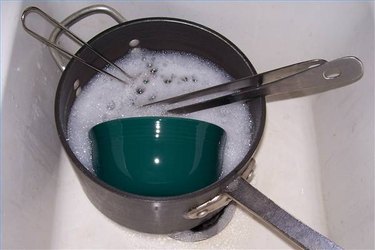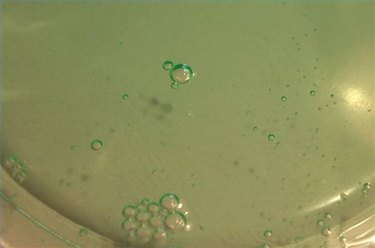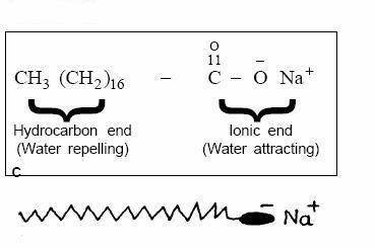
The Basics

Dishwashing liquids are chemical formulations that are combined in a concentrated form to be diluted with water by the consumer. They are used to wash everything from fine china to automobiles in situations that require effective grease-cutting solutions that are gentle on human skin and delicate finishes. Consumers expect lively suds and a "clean" smell, so many dishwashing liquids contain extra sudsing agents and fragrances. Of the dozens of chemical compounds that make up each brand of hand dishwashing liquid, the surfactants and solvents are the ones that conduct the "business" of dissolving and removing the dirt and oils that make grease on dishes. Surfactants are most often made of alkyl-hydrocarbon or hydroxyl chain "anionic" compounds. Nonionic and amphoteric surfactants are used in combination with anionic surfactants in some hand dishwashing liquids and in other detergents, but their uses are limited in dishwashing liquids; anionic surfactants' exhibit superior sudsing to nonionic and amphoteric surfactants are much more expensive to use.
Getting Started
Video of the Day

A majority of hand dishwashing liquids uses a combination of anionic surfactants, which is unique to the brand for patent purposes. Anionic surfactants are composed of linear molecules that have dual personalities---one end attracts water (hydrophilic) and the other repels water (hydrophobic). The hydrophobic ends of the molecules interact with the dirt and grease while the hydrophilic ends join with water, breaking the bond between the grease and the surface on which it resides. More surfactant molecules work into the "interfacial" space between grease and surface, literally rolling the grease up into a ball, surrounded by anion molecules. These molecules enclose the grease, forcing a layer of water between the grease and the surface of the dishes or other surfaces being cleaned.
Video of the Day
Down the Drain

The work of the surfactant is aided by additional surfactants and solvents designed to break down oils. High-solubility surfactants have an extra branch containing alkyl branching that increases their ability to work between oil molecules. Chelating surfactants are made of ethylene or carboxylate hydrophilic ends that crowd together at the grease and water interface, sealing the oil much more effectively. Once the oil has been rolled off of the surface, it forms a "micelle"---a glob of oil surrounded by surfactant molecules. Micelles can be consumed by enzymes or can be broken into smaller compounds by ethylene-based solvents or in the water itself. The oil will stay suspended in water until the concentration of grease reaches a saturation point where the grease begins to float on top of the water or the water is drained from the sink, leaving the surfactants and grease stranded on the drying surface until rinsed with more water.